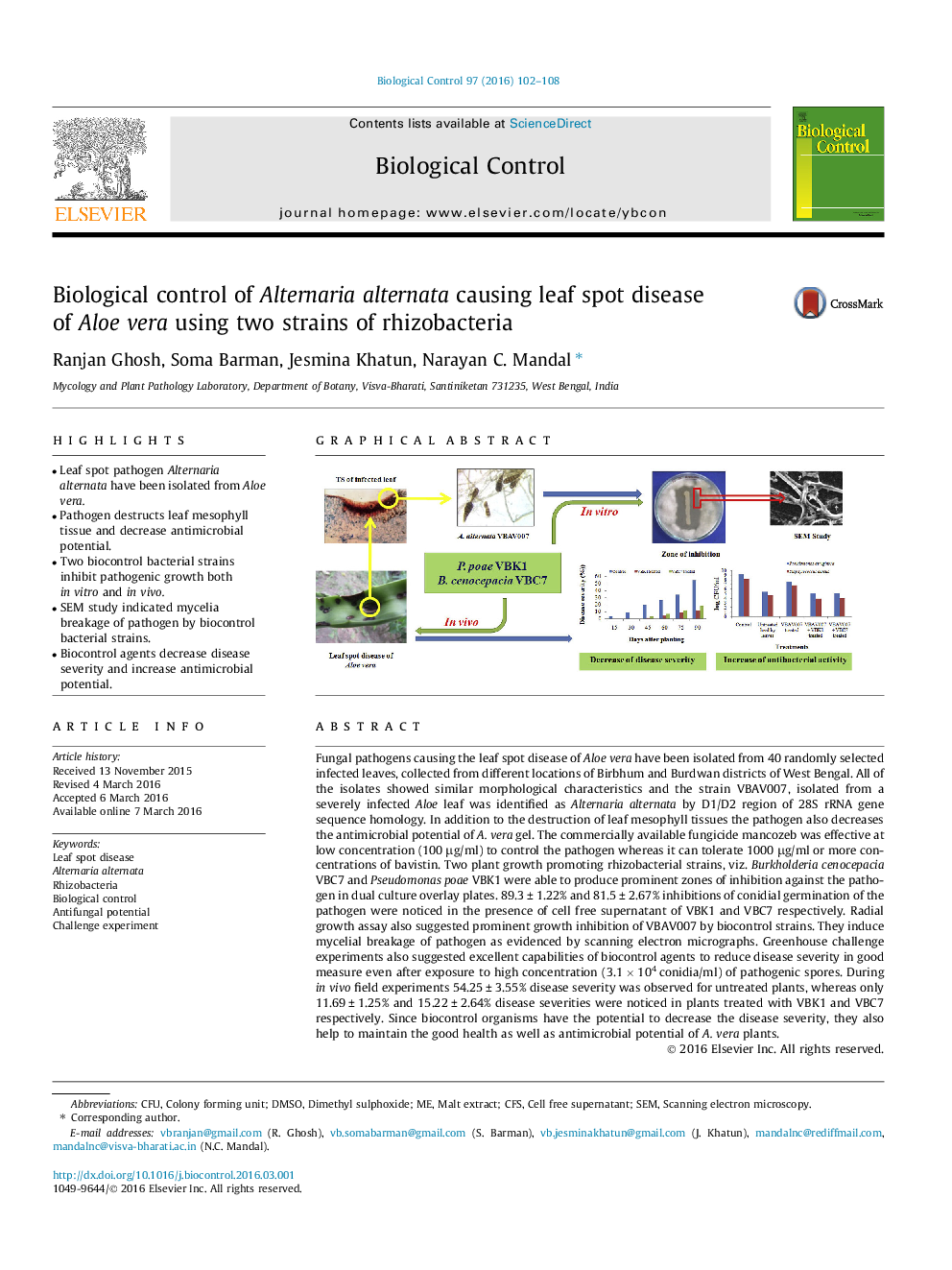| کد مقاله | کد نشریه | سال انتشار | مقاله انگلیسی | نسخه تمام متن |
|---|---|---|---|---|
| 4503691 | 1624237 | 2016 | 7 صفحه PDF | دانلود رایگان |

• Leaf spot pathogen Alternaria alternata have been isolated from Aloe vera.
• Pathogen destructs leaf mesophyll tissue and decrease antimicrobial potential.
• Two biocontrol bacterial strains inhibit pathogenic growth both in vitro and in vivo.
• SEM study indicated mycelia breakage of pathogen by biocontrol bacterial strains.
• Biocontrol agents decrease disease severity and increase antimicrobial potential.
Fungal pathogens causing the leaf spot disease of Aloe vera have been isolated from 40 randomly selected infected leaves, collected from different locations of Birbhum and Burdwan districts of West Bengal. All of the isolates showed similar morphological characteristics and the strain VBAV007, isolated from a severely infected Aloe leaf was identified as Alternaria alternata by D1/D2 region of 28S rRNA gene sequence homology. In addition to the destruction of leaf mesophyll tissues the pathogen also decreases the antimicrobial potential of A. vera gel. The commercially available fungicide mancozeb was effective at low concentration (100 μg/ml) to control the pathogen whereas it can tolerate 1000 μg/ml or more concentrations of bavistin. Two plant growth promoting rhizobacterial strains, viz. Burkholderia cenocepacia VBC7 and Pseudomonas poae VBK1 were able to produce prominent zones of inhibition against the pathogen in dual culture overlay plates. 89.3 ± 1.22% and 81.5 ± 2.67% inhibitions of conidial germination of the pathogen were noticed in the presence of cell free supernatant of VBK1 and VBC7 respectively. Radial growth assay also suggested prominent growth inhibition of VBAV007 by biocontrol strains. They induce mycelial breakage of pathogen as evidenced by scanning electron micrographs. Greenhouse challenge experiments also suggested excellent capabilities of biocontrol agents to reduce disease severity in good measure even after exposure to high concentration (3.1 × 104 conidia/ml) of pathogenic spores. During in vivo field experiments 54.25 ± 3.55% disease severity was observed for untreated plants, whereas only 11.69 ± 1.25% and 15.22 ± 2.64% disease severities were noticed in plants treated with VBK1 and VBC7 respectively. Since biocontrol organisms have the potential to decrease the disease severity, they also help to maintain the good health as well as antimicrobial potential of A. vera plants.
Figure optionsDownload as PowerPoint slide
Journal: Biological Control - Volume 97, June 2016, Pages 102–108